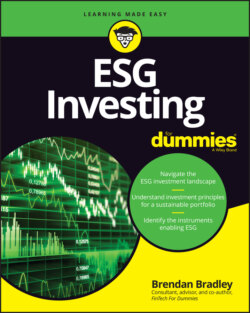Читать книгу ESG Investing For Dummies - Brendan Bradley - Страница 23
Meeting corporate governance requirements
ОглавлениеWhile corporate governance practices have always been a key valuation factor for companies, for fixed income as much as equities, governance has also received a lot of attention during the COVID-19 pandemic — not only for how corporate boards are ensuring the health and safety of their employees and business partners, but also their wider reach into their supply chain management and how they are coping. At a time when their employees may be on government-supported job retention schemes, attention is also being paid to how management is playing its part in executive compensation plans.
The old days of shareholder resolutions serving as an appliance to identify and inspect governance issues — leading to reform in company practices and the acceptance of standards (for example, annual director elections, board gender diversity, and so on) — have changed to a more proactive stance, where asset managers are more engaged and lead policy initiatives and change within some organizations. This greater engagement has led to joint approaches on corporate access, from analysts on the ESG team to traditional financial analysts. Proposals for enhanced ESG disclosures from companies in their sustainability reports will also allow asset managers and owners to further incorporate ESG risk assessments into their investment decisions.
Investors are also pushing for executive pay to be tied to ESG initiatives, so that boards will be compelled to achieve social and other key targets, rather than paying “lip service” to ESG integration. Already, it’s clear that governance is much more about stewardship (see Chapter 18), assuming a given level of accountability as well as responsibility to generate sustainable benefits, rather than hiding behind the preordained rules that have been handed down through the organization. Some would argue that ESG could be transformed into ESS (Environment, Social, and Stewardship) to recognize the role of stewardship in this process. Regardless, there should be a seamless link between stewardship and wider ESG integration, with investors systematically assessing companies based on ESG risks.
Flip to Chapter 5 for the full scoop on the governance factor in ESG.
